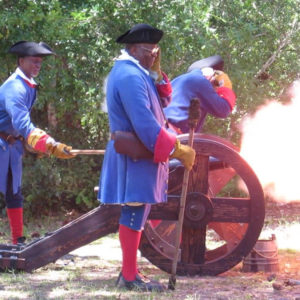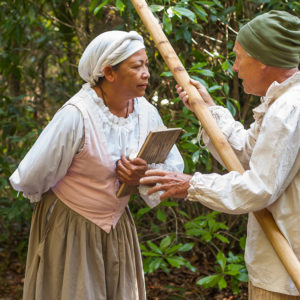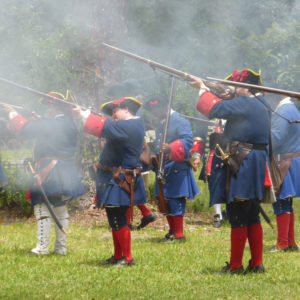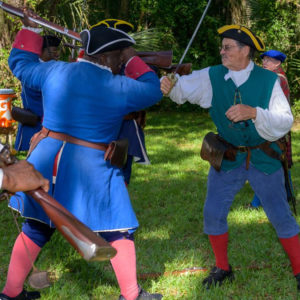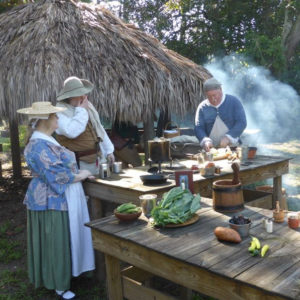Fort Mose Historical Overview
Over 300 years ago, courageous Africans escaped from enslavement within British colonies. They fled southward on foot to Spanish St. Augustine, crossing dangerous swamps and tropical forests. Yamassee natives assisted them on their perilous journey, thus creating the first Underground Railroad.
The first freedom seekers arrived in St. Augustine in 1687 and were granted asylum by the city’s colonial Spanish government. This group included eight men, two women, and a three-year-old nursing child.
By 1738, approximately 100 freedom seekers had successfully reached St. Augustine. In that year, a fortified town named Gracia Real de Santa Teresa de Mose was constructed on St. Augustine’s northern border. Fort Mose citizens were legally declared free, and Fort Mose became the first legally recognized free Black community in what is now the United States.
For years, the free Black Fort Mose militia valiantly protected St. Augustine from British attack. Mose men also contributed critical skills related to construction, hunting, fishing, and trades. The courageous women of Mose sustained and managed community life through essential skills of food cultivation and preparation, childbearing, weaving and sewing, healthcare, and domestic duties. Some Mose women worked in town; others pursued entrepreneurial ventures such as the sale of baked goods and crafts.
In 1740, British troops attacked Fort Mose. The conflict, known as the ‘Battle of Bloody Mose’, was won by allied Black, Spanish, and Native forces. However, the fortress and community buildings were destroyed. Members of the free Fort Mose community moved to the town center.
In 1752 Fort Mose was rebuilt, close to its original location. However, when Spain lost La Florida to England in 1763, the citizens of Fort Mose were once again forced to abandon their community. In order to preserve their hard-earned freedom, they relocated, along with St. Augustine’s Spanish residents, to the Cuban frontier.
In years to come, the Fort Mose site was swallowed by marsh, and the important legacy of our country’s first legally recognized free Black community was largely forgotten.
In the late twentieth century, a highly dedicated team of archaeologists, historians, government leaders, and committed citizens helped restore Fort Mose to its rightful place of honor. Today, Fort Mose is recognized as a significant local, national, and international historic landmark.
Viva Fort Mose!


